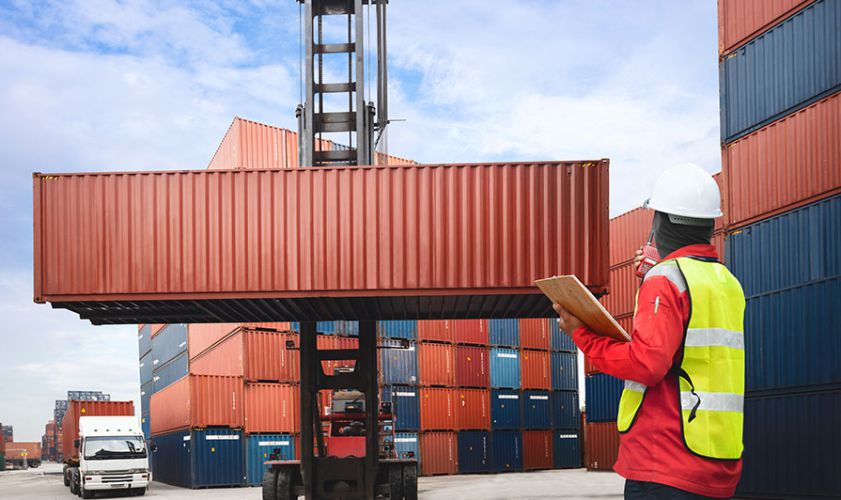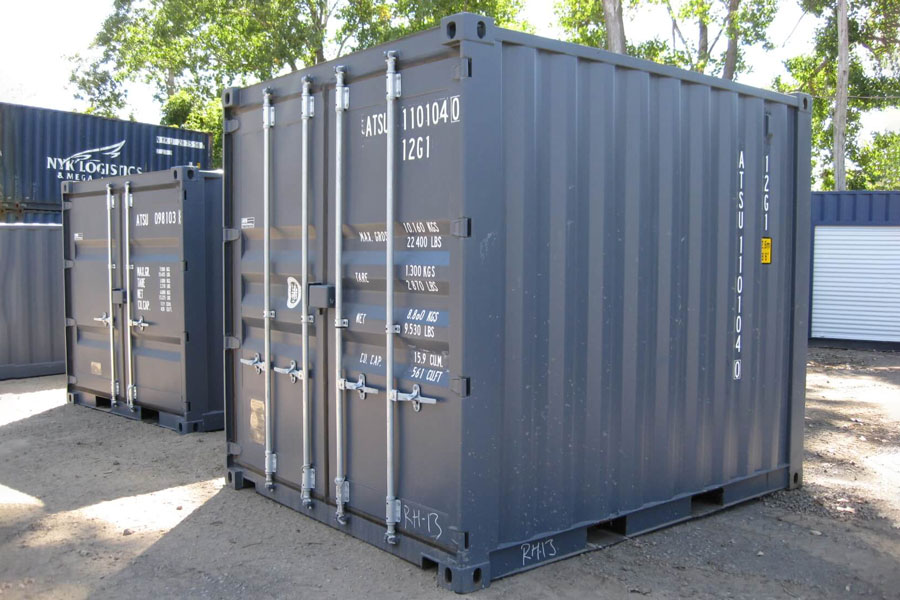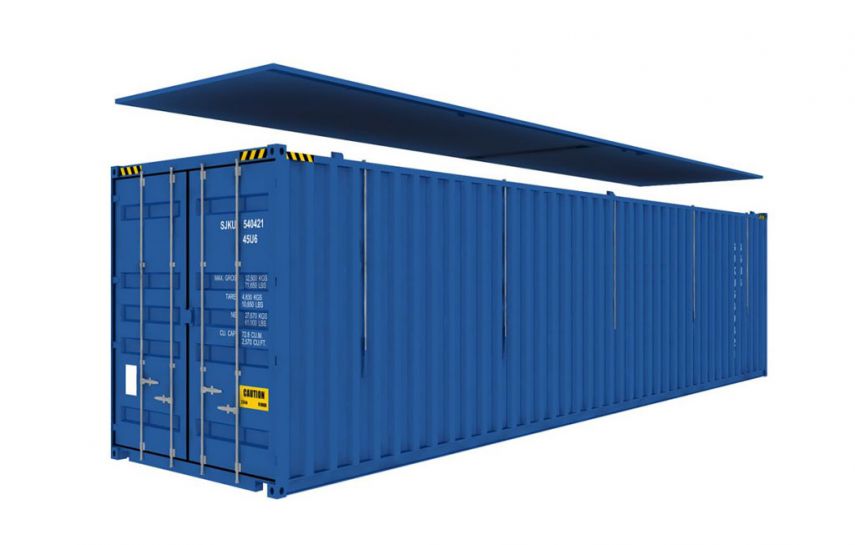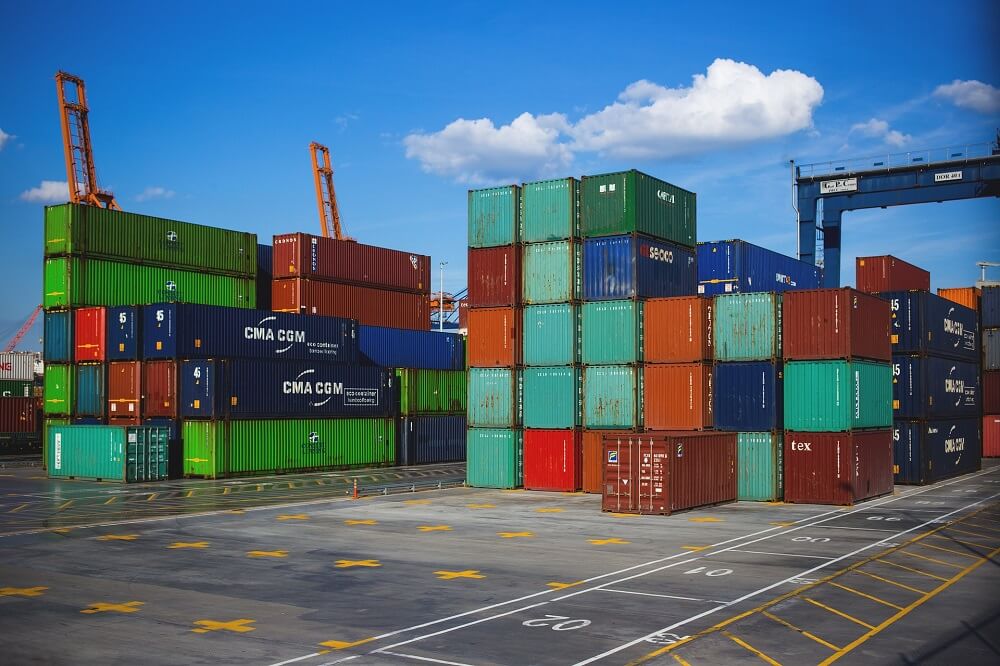When deciding between purchasing new or used shipping containers, there are several factors to consider, including your budget, intended use, and specific requirements. Both New (also known as a One-Trip or One-Way) and Used Containers have their advantages and disadvantages. Here’s a comparison to help you make an informed decision:
NEW/ONE-TRIP SHIPPING CONTAINERS
Advantages of New/One-Trip Shipping Containers:
- Condition- New containers are in great condition compared to used units. They were built overseas in Asia, filled with cargo, and transported overseas to the United States to be sold. That is why they are called NEW/One-Trip containers. They have minimal wear and tear and offer the highest level of structural integrity and cargo protection.
- Longevity- New containers typically have a longer lifespan compared to used ones, which means they may require less maintenance and repair over time.
- Cleanliness- New containers are clean and free from any residues or odors, making them suitable for storing sensitive or food-related cargo.
Disadvantages of New/One-Trip Shipping Containers:
- Cost- New shipping containers are more expensive than their used counterparts, which can significantly have an impact on your budget.
- Environmental Impact- Purchasing new containers contributes to the demand for new steel production, which has environmental implications. Used containers are a more sustainable option.
USED SHIPPING CONTAINERS
Advantages of Used Shipping Containers:
- Cost-Effective- Used containers are more budget-friendly, making them a cost-effective choice for many buyers.
- Sustainability- Buying used containers promotes recycling and sustainability by extending the life of existing resources, reducing the need for new container production.
- Availability– Used containers are readily available in the market, with various sizes and types to choose from.
Disadvantages of Used Shipping Containers:
- Condition- Depending on what shipping container vendor you purchase a used container from, the condition varies significantly depending on their age and previous usage. Some may even require maintenance and repairs.
- Potential Odors or Residues– Some used containers may retain odors or residues from their previous cargo, which can be a concern for certain applications.
- Lifespan- Used containers may have a shorter remaining lifespan compared to new ones, potentially requiring more maintenance and upkeep over time.
FACTORS TO CONSIDER:
When deciding between new and used shipping containers, consider the following factors:
- Budget: Determine how much you are willing to spend and whether the cost difference between new and used containers aligns with your budget.
- Intended Use: Consider the specific requirements of your intended use. If you need a container for long-term storage or a critical application, a new container may be the better choice. For short-term or less critical uses, a used container may suffice.
- Condition: Inspect used containers thoroughly to assess their condition. Look for signs of rust, damage, or structural issues, and evaluate if any necessary repairs are within your budget.
- Customization: If you require extensive modifications or customization, a new container may provide more flexibility and a better starting point.
- Environmental Impact: If environmental considerations are important to you, buying used containers may align better with sustainable practices.
In summary, the choice between new and used shipping containers depends on your specific needs, budget, and preferences. Careful evaluation of the advantages and disadvantages of each option will help you make the right decision for your situation.
Container Delivery Options
Several types of trucks are commonly used to deliver shipping containers, depending on the size and weight of the container, as well as the specific requirements on the delivery site. Here are some of the most common types of trucks used for this purpose:
- Flatbed Truck (Tractor-Trailer): Commonly used for transporting shipping containers, especially for long-haul trips. Flatbed trucks are versatile and well-suited for this purpose because they can handle both 20-foot and 40-foot containers and provide a stable platform for securing the container. These trucks consist of a tractor (cab) pulling a flatbed trailer. The container is typically loaded onto the trailer and secured using twist locks, chassis locks, or chains. Flatbed trucks require you to have a heavy piece of equipment to remove the shipping container from the flatbed at the time of arrival.
- Tilt Bed Truck: Tilt body trucks, also known as tilt bed or tilt deck trucks, are commonly used for local trips and shorter-distance transportation needs. These trucks have a hydraulic tilting mechanism that allows the bed of the truck to be raised and lowered, making them well-suited for tasks that require easy loading and unloading without the need for additional equipment like cranes or forklifts.
- Gooseneck Trailer: Gooseneck trailers are similar to flatbeds but have a gooseneck or fifth-wheel hitch that connects to the tractor. They are often used for transporting heavier or larger containers, such as 40-foot or 45-foot containers.
- Sideloader Truck: Sideloader trucks are equipped with a specialized crane or lift system on the side of the truck. This crane can pick up containers from the ground and load them onto the truck without the need for additional equipment. Sideloader trucks are convenient for locations with limited space for maneuvering.
- Lowboy Trailer: Lowboy trailers have a low deck height and are used for transporting oversized or heavy containers. They are commonly used for specialized or heavy cargo that cannot be transported on standard flatbeds.
- Step Deck Trailer: Step deck trailers have a lower deck section in the middle, allowing them to accommodate taller containers or cargo. They are useful for transporting containers with extra height.
The choice of truck depends on factors like the size and weight of the container, the distance of the transport, and the available equipment. It’s essential to select the appropriate truck and trailer combination to ensure the safe and efficient delivery of the shipping container. Additionally, local regulations and road conditions may influence the choice of truck and route. Learn more about shipping container delivery here: Shipping Containers for Sale Delivered: What You Need to Know.





